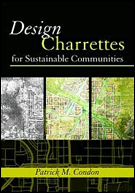The magnificent City of Portland. It prospers--and much of its growth is “smart.” People continue to move closer to the vibrant built-up downtown. Portland is known far and wide for good planning, green planning. Of course Portland would get a new magazine about:
. . . designing the places where we live, work, play and socialize. It’s a guide for creating spaces to love, from gardens, kitchens and living rooms, to workplaces and neighborhoods, to the city and the region as a whole. It’s about the opportunities and trade-offs in balancing sustainability, elegance and value, both when money is no object and also when it is, by necessity or by choice.
The premiere issue of Portland Spaces hit the newsstands a couple weeks ago. The feature item is a three-part Houses That Make History.
- Part one, “three great expressions of today’s home design.”
- Part two, a “timeline of the 164-year history of the single-family home in Portland” on their website here.
- Part three, “building the future.” Portland Spaces found the future in Salem, at Pringle Creek Community:
. . . So the Wilsons began researching places where they could settle into their next phase of life. The Pearl District? South Waterfront? Bend? Nothing seemed to fit, until friends told them about one of the greenest new communities being built in the United States: Pringle Creek. And it happened to be only four miles from their home.It may be surprising that the bar for American sustainability is being hoisted so high in a city the size of Salem, never mind the exact location: the former Fairview Training Center for the developmentally disabled. After the center was decommissioned in 2000, its 275-acre campus became an eco-cause célèbre for the Salem community. The result: one of the most environmentally advanced master plans ever adopted by a city. Pringle Creek will carry out 32 acres of that vision.
. . .
Call it the party at Pringle Creek: A sense of belonging has taken root even before the homes arrived. “I don’t think community is a stagnant thing,” Sue says. “We’ll learn from every participant and every project.”
We at this blog page have introduced the Wilsons, here.
But you would learn more if you could read the whole article, which isn't available on the internet. So consider subscribing to this cool new magazine. Meanwhile, take a look at the two Portland Spaces blogs, and in particular this blog item about buildings planned for Portland.
Photo above: Spaces editor-in-chief, Randy Gragg, unveils the magazine’s premiere cover.




